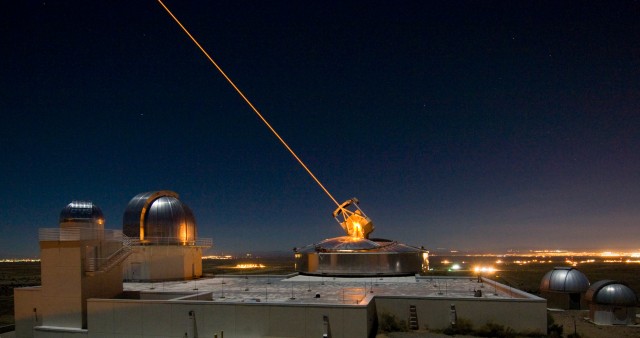Laser technology has advanced tremendously since 1960, when Theodore Maiman made the first ruby laser. In the first half century since the discovery, lasers have attained incredible diversity. We see red laser points everywhere; in toys, bar-code readers, trade show giveaways, and more. Every year, hundreds of millions of lasers are made to make the well-known DVD and Blu-ray players. The argon fluoride excimer laser was first developed in the 70s; used to perform a type of operation called refractive surgery, many saw the potential of laser way before the year 2000.

Laser Technology – The Three Core Approaches
When the first laser came out, the development process dealt with 3 main approaches:
- Gas discharge excitation
- Alkali metal vapor optical pumping
- Solid optical pumping
Theodore Maiman managed to perform the optical pumping on the ruby because of his in-depth knowledge of the material. Ruby is a 3-level laser, whereas uranium lasers demand 4 levels. That’s because the ground state doesn’t need depopulation. It seemed that uranium was never practical; it demanded cryogenic cooling.
CW (Continuous Wave) Gas Lasers
Ali Javan and his team were the first to prove that the continuous-wave laser was for real. An electric discharge was used to excite a blend of neon and helium. The experiment proved to be extremely challenging; others needed 1 year to replicate the process. In the 60s, Dane Rigden and Alan White took laser technology to a new level when they created the He-Ne laser. Many new applications became possible due to the discovery. The red laser was used at a university in Michigan to craft the first laser holograms in 3D. Soon enough, other discharge powered gas lasers emerged.
Vapor Lasers
In the meantime, metal vapor and ion lasers emerged. Most types emitted modest powers. Thanks to chemical reactions, infrared molecular laser technology came to the surface; including hydrogen fluoride lasers. Over the years, these attained hundreds of kilowatts. After proving that metal vapor optical pumping is impractical, dye lasers became available; a broad range of tunable dye lasers lead to several discoveries in laser spectroscopy.
Semiconductor Diode Lasers
Semiconductor diode laser technology was a breakthrough back in the 60s. But because the lasers demanded cryogenic cooling, they were unable to emit continuously. In the late 70s, semiconductor heterojunctions were developed, so as to allow room temperature operations. To make laser diodes usable, several years of intense research followed.
The interest in fiber optic communications systems increased; the first generation was using gallium arsenide lasers that emitted only at 850 nanometers. As the laser technologies advanced, Gallium arsenide (GaAs) lasers split into niches. CDs became a prime optical data storage device.
Laser Technology in the 21st Century
After gas lasers that emitted 808 nanometers became a real pump source for neodymium lasers in solid state, these replaced lamp pumping; that happened because diode pumping ended up being a lot more efficient. As far as applications for diode lasers is concerned, the range is broad; and at the same time amazing.
Right now, we can see everywhere pen-sized lasers that are diode pumped and feature frequency doubled neodymium. Online, everyone can purchase their own battery powered laser pointer (which usually comes in green color) for as little as $50. Various fields use lasers to ease their operations. Physicians use laser-powered tool for surgery precision; whereas the auto industry use them to mark their products, thus diminishing waste and staying on track.
Fiber optic and diode pumping helped keep fiber laser potential and uses on the floating line. The experienced done of the years have proved to ease the job of modern day scientists when developing the next big thing in the industry. In the meantime, fiber lasers with ytterbium doped emissions are pretty useful at carving industrial materials.
It’s not surprising that laser technology has come so far. Things are moving in the right directions; we cannot doubt what laser technology can do. We see increasingly more businesses test laser engraving potential. Apparently, everyone wants to stand out with a visible engraving on their products. Companies are constantly hunting for new ways to make themselves noticed; or keep track of everything they manufacture without experiencing loss and lose track of their products.
Also Read: Laser Technology Has Advanced Greatly Today and is on a Roll – Check It Out!